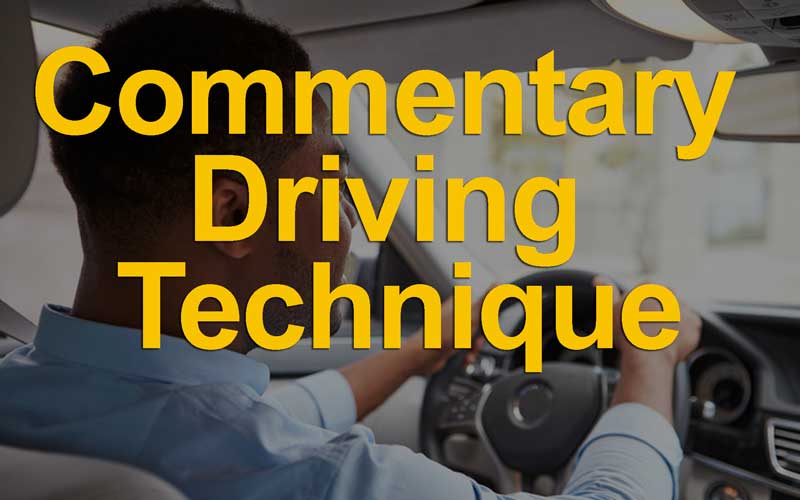The Commentary Driving Technique

COURSE DESCRIPTION
Commentary driving is a technique whereby the automobile student driver “speaks out” all his/her observations, interpretations, evaluations, and intentions which he/she believes are related to the traffic situation, that have developed or are developing about him, while driving. Briefly, it is simple a “reading” of the traffic picture aloud including a running commentary or driving tactics to be employed.
Comments are expected to take place before the fact, not after. For the most part, they should be about things seen or preparatory thinking or intentions on the part of the driver rather than a description of the mechanics of the operation to be taken. Comments need not be complete sentences or phrases.
Objections and Expected Outcomes
- It helps create an awareness of the many problems involved in driving and provides practice in solving some of these problems
- It calls attention in a dramatic was to the vast number of things a driver should be watching for and thinking about and driving is a full times job.
- It helps build up resistance to common distractions
- It reviews and reinforces the knowledge and driving skills previously learned.
- It provides for involvement and participation by student observers.
- It assists in the development of the ability to judge how far ahead one should observe and how early to start taking action.
- It assists in the development of selective seeing habits.
- It assists in the evaluation of student progress and the effectiveness of teaching
- Is the student using his eyes effectively?
- Does the student recognize hazardous situations in time?
- Does he understand and make adequate application to traffic laws and safe driving protection.
- What training or retraining is advisable?
Procedures
The driver is asked to describe everything he believes to be pertinent that he sees ahead, to both sides, and in his rear view mirrors. When there is time, he should announce the various alternate options possible, his choice way such action is best. Comments should include remarks about signs, signals, markings, hazardous situations, actions or expected actions of other road users, ect. The comments should be specific; general terms such as “checking conditions” and “will move to proper lane”, should be avoided.
After a brief explanation, the parent/instructor should give a short demonstration. For example, he/she would say:
Coming to an unmarked intersection. Way is clear. My speed is below 25 mph sign. Pedestrian stepping off curb. Will yield. No car behind. Traffic light block ahead is green. It may be ready to change. Am prepared to stop if necessary--checking mirror. Deliver truck in my lane double parked, Not sure, will tap horn. May need to change lanes. Check mirror. Driver Behind is responding to my slow down. Driver ahead is signaling left turn.
When the driver fails to comment on an important sign or significant situation, he/she may be questioned. Student drivers may be required to write down any items missed and certain interpretations where difference of opinion is expressed.
During advance lessons, it may be desired to introduce distractions as might commonly occur. These might consist of questioned or conversational remarks pertaining to the route, sports, or school affairs, and directed to the driver and/or student observers. The student may be asked to drive to a certain address without directions from the teacher.
Ordinarily, this technique is more applicable during the latter part of the course and especially after the basic skills and maneuvers have been mastered. However, the concept of commentary driving may be introduced rather early on in the course for limited periods of time during a lesson. For example, a brief “reading” of the traffic picture could be asked for on approach to certain intersections. Anytime a traffic situation of any consequences develops some time ahead a student may be asked to verbalize when what he sees is thinking about. Student observers may be asked to take turns verbalizing certain situation. In this war the development of certain visual skills or habits are implemented.
A modification of the commentary driving technique could be used to assist students in the developing the “Keep your eyes moving”, habit. For a limited period of time the driver would be asked to “Sound out” each time he makes a check of the mirror, a gauge, or speedometer. Student observers would be charged with keeping record of frequencies. This would be especially applicable on rural roads or highways where lane and speed control were being developed.
The teacher may, and perhaps should, apply this technique any time he finds it necessary to drive from one area to another and he is not utilizing such driving time for a specific demonstration. This kind of performance shows in a realistic setting how the driver must use his eyes, what he must see, how to interpret, and when to act in a safe and efficient manner.
COURSE FEATURES
BOOK ONLINE, CONTACT US OR REQUEST FOR QUOTE
